Important Message
This Website Terms and Condition of Use Agreement
also known as a 'terms of service agreement'
Will be at the bottom of most web pages!
Please read it before using this website.
Thank You
|
| Battles of the Vietnam War |
This page contains the story of a battle that was fought in 1969. Anyone who can contribute pictures or stories of this battle can email them to me at floyd@1streconbn.com. They would be deeply appreciated and will be added to this page.
This battle took place in the A Shau Valley along South Vietnam's northern border with Laos. Here, On 14 May, 1969 ARVN units and American troops of the 101st Airborne Division assaulted Hill 937--Ap Bia Mountain, or "Hamburger Hill"--about one mile from the Laos frontier. The initial attacks were repulsed by entrenched NVA forces and the action became a battle of attrition between opposing infantry forces. Finally, after nine assaults over six days of heavy fighting in which severe losses were incurred US and ARVN forces took the hill--only to abandon the virtually worthless objective several days later. The battle had occurred only because NVA forces had elected to stand and fight where the terrain was to their advantage; once the US committed large forces, the NVA forces withdrew across the Laos border.
|
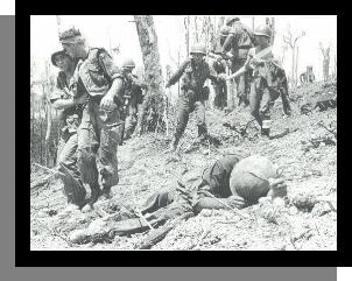 |
| A harrowing scene from "Hamburger Hill,"the bloody 10-day battle that provoked a public outcry resulting in the end of U.S. ground combat operations in Vietnam. Wounded troops from the ARVN's 3rd Infantry Regiment and the U.S. 101st Airborne Division descend Hill 937, which finally fell to their combined assault on May 20, 1969. |
|
|
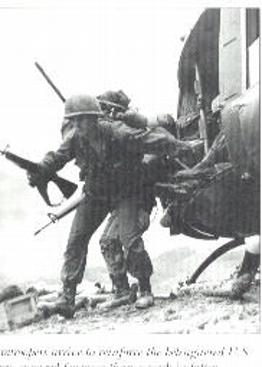 |
| Paratroopers arrive to reinforce the beleaguered U.S. forces, engaged for more than a week in bitter fighting around the 3,000-foot peak. |
|
|
"No matter how tough the job is, the American soldier gets the job done. He might hate the hell out of it, but he never quits. In Hamburger Hill, they might have grumbled, but my God they were there when the chips were down. They eventually went up that hill and took it!"---Colonel Joseph B. Conmy, Jr., Commander of 3rd Brigade, 101st Airborne Division
|
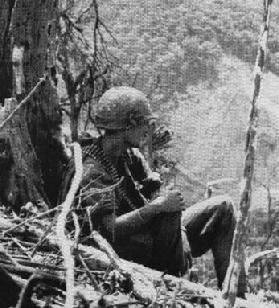 |
| A paratrooper from the 101st Airborne Division gazes across the A Shau valley from the top of Dong Ap Bia-dubbed "Hamburger Hill" by the Americans-six days after the battle. |
|
|
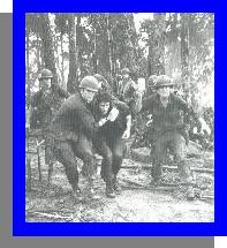 |
| A wounded U.S. paratrooper is rushed to safety during the fierce battle to wrest the strategically located peak from the hands of the Communist. |
|
|
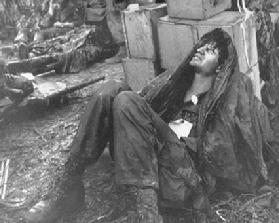 |
| A Soldier grimaces with pain as he waits to be evacuated from the U.S. base camp at Hamburger Hill. |
|
|
The Battle of Hamburger Hill was a battle of the Vietnam War which was fought between the United States and South Vietnam against North Vietnamese forces from May 10–20, 1969. Although the heavily fortified Hill 937 was of little strategic value, U.S. command ordered its capture by direct assault.
The battle was primarily an infantry affair, with the U.S. Airborne troops moving up the highly sloped hill against well entrenched troops. Attacks were repeatedly repelled by weather, friendly fire, accidents, and especially the highly effective Vietnam People's Army (PAVN) defenses. Nevertheless the Airborne troops took the hill through direct assault, causing extensive casualties to the PAVN forces, and taking such in their own units. The debacle caused an outrage both in the American military and public.
The battle took place on Dong Ap Bia (Ap Bia Mountain, Vietnamese: Đồi A Bia) in the rugged, jungle-shrouded mountains of South Vietnam, 1.2 miles from the Laotian border. Rising from the floor of the western A Shau Valley, Ap Bia Mountain is a looming, solitary massif, unconnected to the ridges of the surrounding Annamite range. It dominates the northern valley, towering some 937 meters above sea level. Snaking down from its highest peak are a series of ridges and fingers, one of the largest extending southeast to a height of 900 meters, another reaching south to a 916-meter peak. The entire mountain is a rugged, uninviting wilderness blanketed in double- and triple-canopy jungle, dense thickets of bamboo, and waist-high elephant grass that in some cases was taller than an M113 Armored Personnel Carrier. Local Montagnard tribesmen called Ap Bia "the mountain of the crouching beast." Official histories of the engagement refer to it as Hill 937, but the American soldiers who fought there dubbed it "Hamburger Hill", suggesting that those who fought on the hill were "chewed up like a hamburger" and in joking reference to the Battle of Pork Chop Hill during the Korean War.
|
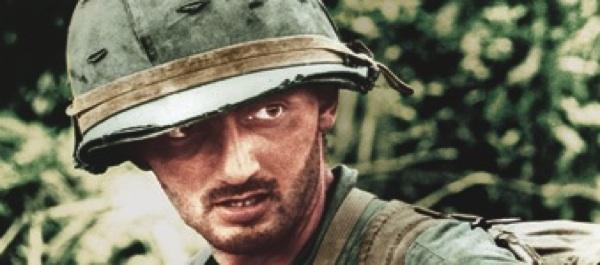 |
| A weary Lt. Frank Boccia, platoon leader in Company B, 101st Airborne Division, 3rd Battalion, 187th Regiment, May 16, 1969, the sixth day of intense fighting to take Hamburger Hill. Courtesy of Samuel Zaffiri, Colorization by Slingshot Studio, Atlanta, GA |
|
|
|
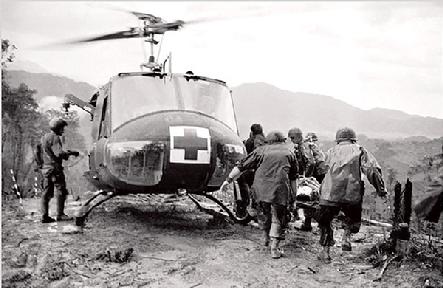 |
| 18 May 1969, A Shau Valley, South Vietnam --- Paramedics load wounded paratroopers of the 101st Airborne Division into a UH-1 Iroquois, also known as a "Huey," following fierce fighting on "Hamburger Hill" in South Vietnam's A Shau Valley. The hill was taken after the 10-day 11-assault campaign which left more than 300 US soldiers killed or wounded. |
|
|
Order of battle
The battle on Hamburger Hill occurred in May 1969, during Operation Apache Snow, the second part of a three-phased campaign intended to destroy People's Army of Vietnam (PAVN) Base Areas in the remote A Shau Valley. This campaign was a series of operations intended to neutralize the A Shau, which had been an infiltration route into South Vietnam prior to 1966, when the North Vietnamese seized the Special Forces camp in the valley during the Battle of A Shau and established a permanent presence. Subsequent U.S. efforts to clear the valley had been consistently unsuccessful. Lieutenant General Richard G. Stilwell, commander of XXIV Corps, amassed the equivalent of two divisions supported by substantial artillery and air support to accomplish the task. The North Vietnamese had moved their 6th, 9th, and 29th Regiments into the area to recover from losses sustained during a previous U.S. Marine operation (Operation Dewey Canyon) in February.
Assigned to Apache Snow were three airmobile infantry battalions of the 101st Airborne Division, commanded by
Major General Melvin Zais. These units of the division's 3rd Brigade (commanded by Colonel Joseph Conmy) were the 3rd Battalion, 187th Infantry (Lt. Col. Weldon Honeycutt); 2nd Battalion, 501st Infantry (Lt. Col. Robert German); and the 1st Battalion, 506th Infantry (Lt. Col. John Bowers). Two battalions of the Army of the Republic of Vietnam's (ARVN) 1st Division (the 2/1st and 4/1st) had been temporarily assigned to the 3rd Brigade in support. Other major units participating in Apache Snow included the 9th Marine Regiment; the 3rd Battalion, 5th Cavalry Regiment and the 3rd ARVN Regiment.
Planning
Colonel Conmey characterized the operation as a reconnaissance in force. His plan called for the five battalions to "combat assault" into the valley by helicopter on May 10, 1969, and to search their assigned sectors for PAVN troops and supplies. The overall plan of attack called for the Marines and the 3/5th Cavalry to reconnaissance in force toward the Laotian border while the ARVN units cut the highway through the base of the valley. The 501st and the 506th were to destroy the enemy in their own operating areas and block escape routes into Laos. If a battalion made heavy contact with the North Vietnamese, Conmy would reinforce it by helicopter with one of the other units. In theory, the 101st could reposition its forces quickly enough to keep the PAVN from massing against any one unit, while a U.S. battalion discovering a North Vietnamese unit would fix it in place until a reinforcing battalion could lift in to cut off its retreat and destroy it.
The U.S. and ARVN units participating in Apache Snow knew, based on existing intelligence information and previous experience in the A Shau, that the operation was likely to encounter serious resistance from PAVN. Beyond that, however, they had little intelligence as to the actual strength and dispositions of PAVN units. Masters of camouflage, the North Vietnamese completely concealed their bases from aerial surveillance. When PAVN forces moved, they did so at night along trails under triple-canopy jungle. They effected their command and control mainly by runner and wire, leaving no electronic signature to monitor or trace. U.S. battalion commanders had to generate their own tactical intelligence by combat patrols, capturing equipment, installations, documents, and occasionally prisoners of war to provide the raw data from which to draw their assessment of the North Vietnamese order of battle and dispositions. It was this time-consuming and hit-or-miss task force which characterized the main efforts of Colonel Honeycutt's 3/187th Infantry during the first four days of the operation.
Initially, the operation went routinely for the 101st Airborne Division. Its units experienced only light contact on the first day, but documents captured by 3/187th indicated that the 29th PAVN Regiment, nicknamed the "Pride of Ho Chi Minh" and a veteran of the 1968 Tet Offensive assault on Hue, was somewhere in the valley. Past experience in many of the larger encounters with PAVN indicated the North Vietnamese would resist violently for a short time and then withdraw before the Americans brought overwhelming firepower to bear against them. Prolonged combat, such as at Dak To and Ia Drang, had been relatively rare. Honeycutt anticipated his battalion had sufficient capability to carry out a reconnaissance on Hill 937 without further reinforcement, although he did request that the brigade reserve, his own Bravo Company, be released to his control.
Honeycutt was a protégé of General William C. Westmoreland, the former commander of U.S. forces in Vietnam. He had been assigned command of the 3/187th in January and had by replacement of many of its officers given it a personality to match his own aggressiveness. His stated intention was to locate the VPA force in his area of responsibility and engage it before it could escape into Laos.
|
Battle
Initial sweeps
On May 11, Honeycutt assigned Alpha and Delta Companies to recon the north and northwest fingers of Ap Bia Mountain, while Bravo and Charlie Companies climbed towards the summit by differing routes. Moving out of the helicopter landing zone (LZ) on the north ridge, Bravo Company made heavy contact with the North Vietnamese within a kilometer of the summit late in the day. Honeycutt quickly directed Cobra helicopter gunships, known as Aerial Rocket Artillery (ARA), to support a hasty assault. In the heavy jungle, the Cobras mistook the 3/187th battalion command post on the LZ for a PAVN unit and attacked, killing two and wounding thirty-five, including Honeycutt. This friendly fire incident disrupted battalion command and control and forced 3/187th to withdraw into night defensive positions. The contact, however, confirmed that a substantial North Vietnamese force was present, which Honeycutt estimated as a reinforced platoon or company.
For the next two days, Honeycutt maneuvered his companies toward positions for a coordinated battalion attack on May 13 but was frustrated by both difficult topography and North Vietnamese resistance. One unit, Delta Company, descended into a steep muddy ravine on May 12 in a flanking maneuver, suffered numerous losses, and was unable to extricate its casualties for two days. The company eventually returned to the battalion LZ on May 15 without participating in the assault.
Map reconnaissance and helicopter overflights had not indicated that the initial scheme of maneuver was impractical, but the three contacts indicated that the North Vietnamese strength was greater than originally estimated, had likely received reinforcements from Laos, and were entrenched in well-concealed bunkers. The North Vietnamese absorbed and inflicted heavy losses, foreshadowing the heaviest fighting to come.
Reinforcing the assault on Hill 937
The 1/506th had made no significant contacts in its area of operations, and at midday on May 13, the brigade commander, Colonel Conmy, decided it would move to cut off North Vietnamese reinforcement from Laos and to assist Honeycutt by attacking Hill 937 from the south. Its Bravo company was heli-lifted to Hill 916, but the remainder of the battalion made the movement on foot, from an area 4 kilometers (2.5 mi) from Hill 937, and both Conmy and Honeycutt expected the 1/506th to be ready to provide support no later than the morning of May 15. Although Bravo Company seized Hill 916 on May 15, it was not until May 19 that the battalion as a whole was in position to conduct a final assault, primarily because of nearly impenetrable jungle.
The 3/187 conducted multi-company assaults on May 14 and May 15, incurring heavy casualties, while the 1/506th, led by 1st Lt. Roger Leasure, made probing attacks on the south slopes of the mountain on May 16 and May 17. The difficult terrain and well organized North Vietnamese forces continually disrupted the tempo of U.S. tactical operations on Hills 916, 900, and 937. Steep gradients and dense vegetation provided few natural LZs in the vicinity of the mountain and made helicopter redeployments impractical. The terrain also masked the positions of the 29th PAVN Regiment, making it nearly impossible to suppress anti-aircraft fire, while the jungle covered the movement of North Vietnamese units so completely that it created a nonlinear battlefield. PAVN soldiers, able to maneuver freely around the LZs, shot down or damaged numerous helicopters with small arms fire, rocket-propelled grenades, and crew-served weapons. The North Vietnamese also assaulted nearby logistical support LZs and command posts at least four times, forcing deployment of units for security that might otherwise have been employed in assaults. Attacking companies had to provide for 360-degree security as they maneuvered, since the terrain largely prevented them from mutually supporting one another. PAVN platoon- and company-sized elements repeatedly struck maneuvering U.S. forces from the flanks and rear.
Tactical difficulties
The effectiveness of U.S. manoeuvre forces was limited by narrow trails that funneled attacking companies into squad or platoon points of attack, where they encountered PAVN platoons and companies with prepared fields of fire. With most small arms engagements thus conducted at close range, U.S. fire support was also severely restricted. Units frequently pulled back and called in artillery fire, close air support, and ARA, but the North Vietnamese bunkers were well-sited and constructed with overhead cover to withstand bombardment. During the course of the battle the foliage was eventually stripped away and the bunkers exposed, but they were so numerous and well constructed that many could not be destroyed by indirect fire. Napalm, recoilless rifle fire, and dogged squad and platoon- level actions eventually accounted for the reduction of most fortifications, though at a pace and price thoroughly unanticipated by the American side.
U.S. battle command of small units was essentially decentralized. Though Honeycutt constantly prodded his company commanders to push on, he could do little to coordinate mutual support until the final assaults, when the companies maneuvered in close proximity over the barren mountain top. Fire support for units in contact was also decentralized. Supporting fires, including those controlled by airborne forward air controllers, were often directed at the platoon level. Eventually human error led to five attacks by supporting aircraft on the 3/187th, killing seven and wounding 53. Four of the incidents involved Cobra gunship helicopters, which in one case were more than a kilometer away from their intended target.
|
Hamburger Hill
On May 16, Associated Press correspondent Jay Sharbutt learned of the ongoing battle on Hill 937, traveled to the area and interviewed Zais, in particular asking why infantry rather than firepower was used as the primary offensive tool on Hill 937. More reporters followed to cover the battle, and the term "Hamburger Hill" became widely used.
The U.S. brigade commander ordered a coordinated two-battalion assault for May 18, with 1/506th attacking from the south and 3/187th attacking from the north, trying to keep the 29th PAVN Regiment from concentrating on either battalion. Fighting to within seventy-five meters of the summit, Delta Company 3/187th nearly carried the hill but experienced severe casualties, including all of its officers. The battle was one of close combat, with the two sides exchanging small arms and grenade fire within twenty meters of one another. From a light observation helicopter, the battalion commander attempted to coordinate the movements of the other companies into a final assault, but an exceptionally intense thunderstorm reduced visibility to zero and ended the fighting. Unable to advance, 3/187 again withdrew down the mountain. The three converging companies of 1/506th struggled to take Hill 900, the southern crest of the mountain, encountering heavy opposition for the first time in the battle.
Because of the heavy casualties already sustained by his units and under pressure from the unwanted attention of the press, Zais seriously considered discontinuing the attack but decided otherwise. Both the corps commander and the MACV commander, General Creighton W. Abrams, publicly supported the decision. Zais decided to commit three fresh battalions to the battle and to have one of them relieve the 3/187th in place. The 3/187th's losses had been severe, with approximately 320 killed and wounded, including more than sixty percent of the 450 experienced troops who had assaulted into the valley. Two of its four company commanders and eight of twelve platoon leaders had become casualties.
The battalion commander of the 2/506th, Lt. Col. Gene Sherron, arrived at Honeycutt's CP on the afternoon of May 18 to coordinate the relief. 3/187th was flying out its latest casualties, and its commander had not yet been informed of the relief. Before any arrangements were made, Zais landed and was confronted by Honeycutt, who argued that his battalion was still combat effective. After a sharp confrontation, Zais relented, although he assigned one of Sherron's companies to Honeycutt as reinforcement for the assault.
Final assault
Two fresh battalions—the 2/501st Infantry and ARVN 2/3d Infantry—were airlifted into LZs northeast and southeast of the base of the mountain on May 19. Both battalions immediately moved onto the mountain to positions from which they would attack the following morning. Meanwhile the 1/506th for the third consecutive day struggled to secure Hill 900.
The 3rd Brigade launched its four-battalion attack at 10:00 on May 20, including two companies of the 3/187th reinforced by Alpha Company 2/506th. The attack was preceded by two hours of close air support and ninety minutes of artillery prep fires. The battalions attacked simultaneously, and by 12:00 elements of the 3/187th reached the crest, beginning a reduction of bunkers that continued through most of the afternoon. Some PAVN units were able to withdraw into Laos, and Hill 937 was secured by 17:00.
|
ARVN participation
According to recent research, particularly the admission by General Creighton W. Abrams in "The Abrams Tapes", the 2/3 ARVN unit participating in the final assault, positioned on a stretch of the PAVN defense line that was lightly defended, sent a scout party to test the forward enemy lines, earlier than the proposed assault time, to which it was quickly was able to discern the minimal enemy strength. The 2/3 ARVN commanding officer decided to exploit the situation, and attack in advance of the other units. The 2/3 ARVN reached the crest of Hamburger Hill around 10:00, ahead of the 3/187th, but was incredibly ordered to withdraw from the summit, under the pretense that allied artillery was to be directed on to the top of the hill. The opportunity to threaten the PAVN lines facing the 3/187th was lost. Shortly after the 2/3 ARVN completed their withdrawal, the 3/187th was able to break through the PAVN defenses and occupy the summit, giving the illusion that American troops had conquered their objective first.
Casualties
U.S. losses during the ten-day battle reportedly totaled 72 dead and 372 wounded. To take the position, the 101st Airborne Division eventually committed five infantry battalions, about 1,800 men, and ten batteries of artillery. In addition, the U.S. Air Force flew 272 support sorties and expended more than 450 tons of bombs and 69 tons of napalm.
US claimed the 7th and 8th Battalions of the 29th PAVN Regiment suffered 630 dead discovered on and around the battlefield, including many found in makeshift mortuaries within the tunnel complex, and an unknown number of wounded that likely totaled most of the remainder of the two units.
|
Aftermath
Major General John M. Wright, quietly abandoned the hill on June 5. The debate over "Hamburger Hill" reached the United States Congress, with particularly severe criticism of military leadership by Senators Edward Kennedy, George McGovern, and Stephen M. Young. In its June 27 issue, Life Magazine published the photographs of 241 Americans killed in one week in Vietnam, considered a watershed turning point in the war. While only five of these were casualties on Hamburger Hill, many Americans had the perception that all the dead were victims of the battle.
The controversy of the conduct of the Battle of Hamburger Hill led to a reappraisal of U.S. strategy in South Vietnam. As a direct result, to hold down casualties, General Abrams discontinued a policy of "maximum pressure" against the North Vietnamese to one of "protective reaction" for troops threatened with attack, while President Richard Nixon announced the first troop withdrawals. Although the battle did not have the most U.S. KIAs of any single engagement, nonetheless the battle became a turning point in the war.
In 1987, a movie about the battle was released, called Hamburger Hill.
|
|
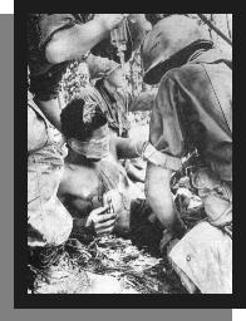 |
| Medics act quickly to attend to a wounded trooper of the 101st Airborne Division. He has been hit in the face by an enemy hand grenade during an advance up the NVA-held slopes of Hamburger Hill. |
|
| |
|
The following pictures were submitted by: Art Wiknik, Jr. Co. A/506th
Hamburger Hill Survivor
|
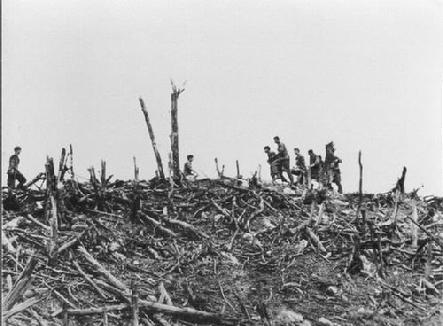 |
| Hamburger Hill |
|
|
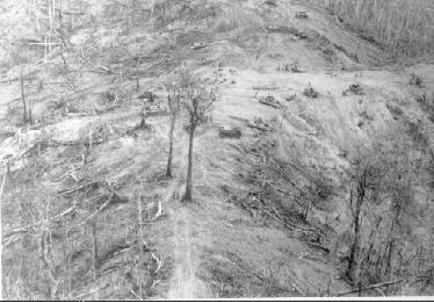 |
| Hamburger Hill |
|
|
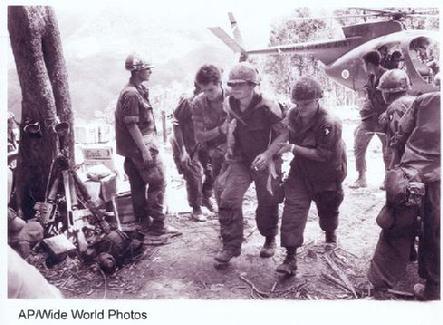 |
| AP_Wounded_In_Final_Assault |
|
|
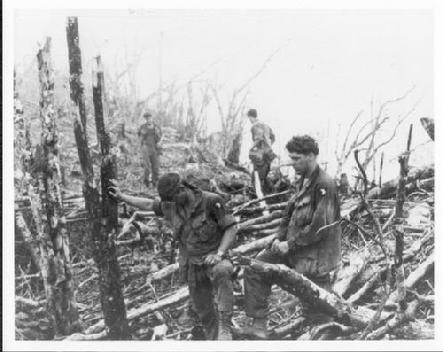 |
| Dong_AP_BIA_Mountain_The_Aftermath |
|
|
|
The following pictures were submitted by: Bettmann/CORBIS
|
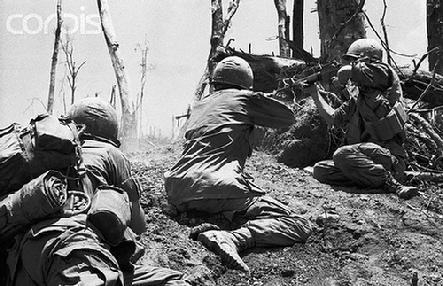 |
| 20 Mar 1969, A Shau Valley, South Vietnam --- 3/20/1969-A Shau Valley, South Vietnam: Two members of the 101st Airborne Division fire into a North Vietnamese bunker near the top of "Hamburger Hill" overlooking the A Shau Valley. The paratroopers captured the summit of the hill 5/20 after 11 assaults in 10 days that killed or wounded more than 300 U.S. soldiers. |
|
|
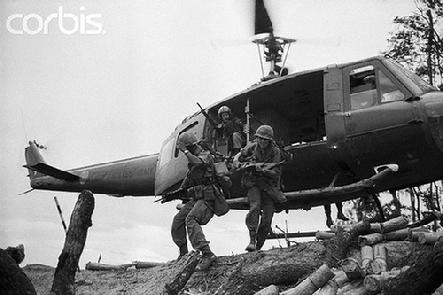 |
| 18 May 1968, A Shau Valley, South Vietnam --- 5/18/1969-A Shau Valley, South Vietnam: View of 101st Airborne Division troopers charging up "Hamburger Hill." The troops suffered too many casualties before being halted short of the mountain top by dug-in North Vietnamese. |
|
|
 |
| History of the 101st Airborne Division |
|
|
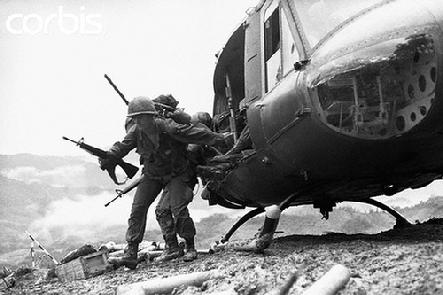 |
| 18 May 1969, A Shau Valley, South Vietnam --- Paratroopers jump out from a helicopter to assist in fighting at Dong Ap Bia, which became known as "Hamburger Hill" in the A Shau Valley in South Vietnam on May 18, 1969. The battle lasted 10 days for the Army of the Republic of Vietnam and the U.S. 101st Airborne Division fighting against the North Vietnamese Army resulting in heavy casualties for all. |
|
|
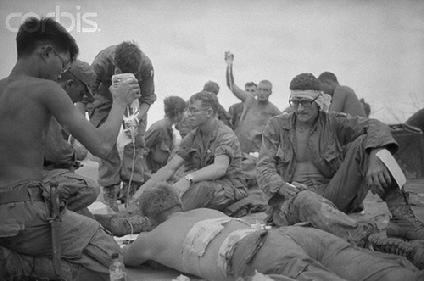 |
| 20 May 1969, Thua Thien Province, South Vietnam --- A Shau Valley, S. Vietnam: Wounded U.S. soldiers receive medical attention as they await evacuation during bitter fighting for "Hamburger Hill" near the A Shau Valley May 12, 1969. U.S. paratroopers captured the summit of the hill May 20, 1969 after 11 assaults in 10 days that killed or wounded more than 300 U.S. soldiers. |
|
|
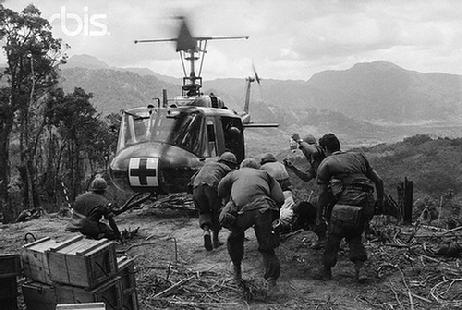 |
| 19 May 1969, A Shau Valley, South Vietnam --- An evacuation helicopter sets down on a tiny clearing on "Hamburger Hill" as a wounded American soldier is rushed aboard May 18. Men of the US 101st Airborne division are trying to take the bomb-scarred, blood-soaked mountaintop from North Vietnamese forces. (The A Shau Valley is seen behind the helicopter.) |
|
|
HAMBURGER
HILL
The Real Story (Day by Day)
During the Tet Offensive of 1968, the NVA had staged, through the A Shau Valley, an entire NVA division and other VC forces for its massive attacks on Hue and Da Nang. In the battle for Hue alone, the NVA lost over five thousand men. By early 1969, it was becoming apparent to the MACV [Military Assistance Command Vietnam] and XXIV Corps staffs that A Shau Valley was once again an area of high NVA activity, logistically and strategically, and an important terminus for the Ho Chi Minh Trail. The 3/187th's battle for Dong Ngai and the discovery of mammoth supply depots in the area served to accentuate that point. In May of 1969 the American command planned to clear out the A Shau Valley using ten battalions of infantry, including the 9th Marine Regiment, the 3d ARVN Regiment, the 3/5th Cavalry, and three air assault battalions: 1/506th, 2/501st, and 3/187th. The overall plan of attack called for the Marines and the 3/5th Cavalry to combat-assault into the valley and RIF [reconnaissance in force] toward the Laotian border while the ARVN units cut the highway through the base of the valley. The 501st and the 506th mission were to destroy the enemy in their own operating areas and block escape routes into Laos.
Lieutenant Colonel Honeycutt commanded the 3/187th, known by the WW II nickname "Rakkasans". They drew what turned out to be the toughest part of the operation: Clear and occupy Dong Ap Bia, a mountain that rose to 970 meters at its highest point with ridgelines at 800, 900, 916, and 937 meters high. In the rather cryptic words of one army historian: "3/187th Infantry would combat-assault into LZ 2, 2,000 meters northwest of Dong Ap Bia and 1,500 meters west of the Laotian border. The order of movement would be D, A, C; B Company would act as the brigade reserve until released. D Company would secure the LZ until replaced by A Company and the RIF to the high ground 500 meters to the northwest. C Company would secure the LZ until the Headquarters element reached the LZ and then move 500 meters to the southwest. The Headquarters group would move to link up with C Company, moving toward Dong Ap Bia. When B Company was released from standby status it would be combat-assaulted into LZ 2 and then proceed to the southwest to a ridgeline running from Hill 937.
The terrain in the area favored the defenders. The mountains they were to defend and their ridges were along the Trung Pham River on the Laotian border. The area was covered with a tropical, double- and triple-canopied jungle. The land beneath the trees was a tangled mass of saw-toothed elephant grass, thick stands of bamboo, and other tough vines that inhibited foot movement, even without an enemy presence. The hills gave way to ridgelines, cut with deep ravines, saddles, draws, and smaller hills. It was an area long occupied by the NVA and fortified with bunkers, spider holes, deep tunnels, trenches, and underground shelters for aid stations, Command Posts, and storage depots. And this time, the NVA intended to stay their ground.
Operation Apache Snow was scheduled to launch on 10 May 1969.
10 May 1969
Firebase Blaze, five hundred by a thousand meters, was twenty kilos south of Ap Bia Mountain. In the early morning hours, eighteen hundred men from five battalions-1/506th, 2/501st, and 3/187th from the 101st Airborne Division, and 4/1 and 2/1 ARVN-were assembled there to await liftoff. In the predawn hours, the troopers lounged about the area, napping, smoking, talking, wiping off sweat from the early-morning heat, cleaning weapons. Pilots and door gunners stood by some of the sixty-five Hueys, already at Firebase Blaze, that would air-assault the troops into the battle area. The men were poised to launch the largest air mobile assault in the Vietnam war. Ten artillery batteries were laid and ready to fire from Firebases Bradley, Airborne, Currahee, Berchtesgaden, and Cannon, having been moved in to their firing positions only sixteen hours before the invasion.
H-Hour was 0730. In the hour before the helicopter launch, fighter-bombers had bombed the LZs for fifty minutes; the artillery followed with a fifteen-minute barrage. Then came aerial rocket artillery helicopters for a one-minute "frosting on the cake." The troops could hear their bombs blasting the enemy defenses-and, they hoped, cutting down their losses later. At 0649, the TAC-Air prep stopped and the troops prepared to "saddle up." The lift helicopters, UH-1Ds, began to arrive at Firebase Blaze in groups of sixteen, for a total of sixty-four. At 0730, H-Hour, the sixty-four Hueys and the first four hundred men and the lead companies of 1/506th and 3/187th covered by Cobra gunships, were on their way to the northern A Shau Valley. The Hueys flew to the south across the A Shau Valley, and then, using the walls of the valley as a screen, turned to the north along the Laotian border to their LZs.
By 0800, D Company, then A and C, landed on LZ 2 without opposition. Ten minutes later, the troops were moving toward their assigned locations and setting up defensive positions. As planned, Capt. Dean L. Johnson and his C Company secured the LZ. Captain Gerald R. Harkins and his A Company moved out toward the Laotian border. Captain Luther L. Sanders led his D Company to the south-southwest, passed through the battalion CP on LZ 2, and headed up the ridge protruding to the northwest of Dong Ap Bia. At 0945, Honeycutt and his command ship landed on LZ 2. Honeycutt relieved Capt. Dean Johnson of LZ security, and Johnson and C Company moved out toward the border. Then Honeycutt and part of his staff began to move up the mountain ridge behind D Company and, at about 1100, linked up with Sanders about a thousand meters from the top of the mountain. Helicopters hovering slowly overhead reported enemy trails, campsites, supply dumps, and bunkers. The signs of the enemy were becoming ominous. Honeycutt began to sense the enemy around him and radioed Colonel Conmy to release B Company to him. Conmy readily agreed, and B Company arrived at LZ 2 about 1430. Capt. Charles L. Littman, who had taken over from Captain Robinson on 8 May and would command the company for only twelve days, commanded B Company. At about 1530, B Company reached Honeycutt's battalionCP. Honeycutt ordered Littman to move his company up the mountain.
"I doubt if you'll make it tonight." Honeycutt told him, "but sometime late tomorrow morning I want to move the CP up there."
"That shouldn't be any problem," Littman replied.
"And be careful."
"Don't worry, Colonel." Littman and B Company were on the way.
"After reaching the uppermost portion of the ridge, the company moved several hundred meters to the northeast and the proceeded south along a second ridge," wrote an Army historian. "As the company moved, the enemy's presence could be felt. Lookout towers high in the boughs of the canopy were passed. Jointed sections of bamboo, freshly cut for their water content, were strewn about. Spider holes and punji pits were encountered. B Company moved slowly, hoping to make the summit before dusk. The sound of artillery impacting on the hill, the ridges, and in the valleys and ravines was pleasing to the ear. The faint ping of mortar fire, coming from the battalion CP at D Company's location, was reassuring. A round whined overhead, then another.
Contact! Small-arms fire began to pour in and the RPGs. The second platoon, led by Lt. Marshall Edwards, dispersed and returned fire. The bushes, the trees, the jagged rocks all seemed steeped with the violence of armed combat. The smell of cordite hung low over the anxious troops. Artillery was adjusted to within 25 meters of the platoon with shrapnel falling into friendly positions. The firing subsided, the flared again as the Rakkasans moved forward.... When more HE was poured into enemy positions, the fire lessened and then stopped; sweep teams found four enemy bodies and four AK-47's.... Artillery pounded the area throughout the night." Honeycutt ordered Littman to dig in and establish an NDP.
|
11 May 1969
Just prior to dawn, the Rakkasans in NDPs [night defensive position] launched a "mad minute," heavy machine-gun and automatic-rifle fire out of the perimeter into the enemy positions. Cobra gunships were on station overhead. At 0750, B Company, with Lieutenant Denholm's 4th Platoon in the lead, moved out. As the platoon made its way up the denuded ridge, the men found bloody trails, weapons, gear, and eight enemy KIAs. Throughout the late morning and early afternoon, the other three companies slugged on, finding fresh bunkers, communications wire, and other NVA gear. At about 1600, Denholm's men hit the enemy head-on. An enemy soldier sprang from a hole and shot Sp4 Aaron Rosenstreich in the chest. Sp4 John McCarrell was blown to bits by an NVA rocket. Rosenstreich died moments later. Denholm was blown down the trail, but, even deaf and stunned, he called for a machine gun. Sp4 Terry Larson rushed forward and was shot through the head. Sp4 Donald Mills rushed forward with an M60 and was shot through the chest. Seconds later, he got up, charged, and emptied his weapon into the sniper. In a bind, the B Company men grenaded the area around them and pulled back, carrying their dead and wounded with them. Honeycutt called in artillery and air strikes.
At 1730, gunships flew over the area. During one strike, a gunship misfired and hit Honeycutt's CP with rockets. He was hit and two of his men killed. Thirty-five men were wounded, including battalion Sgt. Maj. Bernie Meehan. Honeycutt got on his radio and demanded that all aircraft check with his CP before launching strikes and halt all ARA [aerial rocket artillery] until friendly positions were marked more clearly.
Later that day, from documents found on an NVA soldier and translated by his Kit Carson scout, Honeycutt and the Brigade intelligence officer, Captain Fredericks, estimated that the 29th NVA Regiment was on the mountain with a strength of between twelve and eighteen hundred men, heavily reinforced with weapons. The 29th mission, according to the documents, was to infiltrate down to the plains and attack Hue.
A Company moved east toward the border. C Company moved to the southeast and at 0913 reported its location as three hundred meters southeast of the battalion CP that was on the hill's northeastern ridge for the remainder of the operation.
With the new intelligence, Honeycutt realized that his enemy was a major force and one ready and able to fight. He ordered Captain Johnson to move his C Company east toward the Ap Bia Mountain. He directed Harkins to move A Company back up the ridge to the battalion CP to relieve D Company. He told Sanders to use D Company to clear a ravine to the northeast, and then attack up the mountain from that position.
12 May 1969
During the day, eight air strikes pummeled the enemy positions, the last one at 1734. The strikes included high drag bombs, napalm, and five-hundred and one-thousand-pound bombs with delay fuses. As the gunships left, artillery fire - 105s, 155s, and 8-inch - blasted the area with great accuracy. B Company started up the ridge when the fire lifted. The bombing and napalm had opened trails in the jungle and the men saw enemy bunkers that they blasted with recoilless rifles. The fire caused the NVA soldiers to spring from their spider holes. They rolled grenades down on the Rakkasans, wounding six men. Littman moved his company back down the ridge, carrying the wounded with them. Helicopter gunships and fighter-bombers returned to cover the area with "snake and nape".
In the D Company area, Sanders was having trouble. As the single lines of men moved slowly and cautiously through the ravines and dense jungle they were hit from three directions by many snipers high in the trees. The D Company troopers raked the trees with gunfire, but progress was slow. They could hear the enemy all around them.
Honeycutt wanted another LZ near B Company. One of the helicopters bringing in the engineers and their equipment was hit by enemy fire and crashed. But most of the engineers landed safely, rescued their gear, and, with B Company help, by 1500 had completed the lower LZ. Honeycutt had another LZ carved out 100 meters north of his CP-known as the upper LZ. By evening, C Company, after being ambushed in late afternoon when rocket-propelled grenades hit the trees above them and suffering eight wounded, was in an NDP 500 meters southeast of the lower LZ. B Company's NDP was located 350 meters northeast of the lower LZ. D Company was 500 meters to the north of the lower LZ. A Company and the battalion command post remained at the blocking position next to the upper LZ. During the night, the NVA probed all the NDPs and, at midnight, hit the NDPs with accurate mortar fire.
|
13 May 1969
At 0656, the forward air controller (FAC), arrived on station and directed ten air strikes against the known enemy fortifications. The Phantom jets used delayed-action ordnance to penetrate the canopy and explode in depth in the bunkers, trenches, and spider holes. The Rakkasans were well aware that the enemy troops ducked into the tunnels and bunkers at the sound of the jets and came out as soon as they left the area.
After the early-morning air strikes, B and C Companies resumed their treacherous climb up the ridge toward the enemy's dug-in positions and suffered a withering attack from a nest of snipers and small arms, RPGs (Rocket Propelled Grenade) and hand grenades. More and more wounded 3/187th soldiers from B and C Companies made their way back down the trails. Other Rakkasans, carrying cans of ammo and grenades, passed them on the way up. In the C Company CP area, two men were killed and five wounded by an NVA attack into their security perimeter. The artillery Forward Observer called for fire and broke up the attack.
D Company was having an equally difficult time about six hundred meters from the battalion command post, wading through a river, climbing up the side of a ravine, and then attacking toward the top of Ap Bia. The NVA hit them with rocket-propelled grenades, badly wounding three men. Across the river, another RPG hit the 3d Platoon, wounding five men, and blowing Lieutenant Mattioli off the ridge and into the river.
"Delta Company, with platoons on both banks of the ravine, returned the fire with every available weapon and called for gunships," wrote Fred Waterhouse. "They also called for a MedEvac helicopter, which arrived on the scene at 1510 hours. As the Rakkasans were hoisting the wounded into the hovering helicopter, an RPG slammed into it. It crashed down on Pfc. George Pickel, killing him instantly. One of its whirling blades killed Sp4 William Springfield and wounded Miguel Moreno. Captain Luther Sanders watched in agony. He now had seven wounded and seven dead. His company would have to carry all of them out by litter. Delta Company started back up the mountain through the river bottom. At places, they climbed sheer cliffs and took one hour to move a hundred yards."
By late afternoon, the 3d Platoon of A Company reached the beleaguered D Company and the column started moving again, struggling up the steep cliffs at about thirty feet in half an hour. Then the rain came in torrents. Sanders halted his column and set up an NDP and called in artillery to surround his perimeter with close-in, constant shelling throughout the night. Just after midnight, the NVA, from the shelter of Laos, hit the Rakkasan positions with mortars. Honeycutt called in the "Spooky" gunship, a C-47 equipped with rapid-fire Gatling guns, to spray the area. The NVA did not attack that night. Meanwhile, Colonel Conmy ordered the 1/506th to change its mission and reinforce the 3/187th attack on the mountain.
14 May 1969
At 0646, the FAC reported in to Honeycutt's CP and directed thirteen air strikes - napalm, thousand-pound bombs - on the mountain throughout the day. The artillery from the nearby firebases blasted the area constantly. The first concentrated attack on the summit began at 0756," wrote an Army historian. "C Company moved east from its NDP location up a small finger (Finger 1). B Company moved to the east from its NDP location up a small finger about 150 meters north of C Company (Finger 2). Both companies came into contact immediately but pressed on, with C Company reaching the military crest of the hill at 0843. Mutually supporting bunkers were encountered. Claymores were set up in the trees. Heavy mortar, RPG, and small-arms fire continued to harass the Rakkasans."
On ridge finger 2, C Company found itself in a ferocious fight when the NVA pummeled them with small-arms fire, RPGs, and grenades, rolled down the sides of hills. In Lt. James Goff's 3d Platoon, six men were badly wounded. The troops kept moving forward, but the NVA came out of their holes, firing AK-47s. Goff's men were hit from all sides. Two were killed and fifteen wounded. The other platoons of C Company were nailed against the side of the mountain.
Sfc. Louis Garza led a platoon from B Company in three unsuccessful assaults up the hill to help B Company, and had seven men wounded. On his fourth attempt, Garza moved through the NVA bunker line and found NVA bodies throughout the area. The enemy in a second row of bunkers opened fire and wounded six more troopers. The lead platoons of B and C Companies began to fall back under heavy NVA fire. Sp4 John Comerford crawled up with an M60 machine gun and sprayed the bunkers. But it was not enough. Honeycutt sent a platoon from A Company to cover the withdrawal. Unfortunately, as it moved up, it was hit by helicopter gunships firing rockets that killed Sp4 Edward Brooks and badly wounded three other men. Lieutenant Donald Sullivan and his 2d Platoon of C Company tried to help the fallback but was hit with RPGs that wiped out a four-man litter team, blew his radio operator, Sp4 Ron Swanson, down the hill, and killed Rakkasan Willie Chapman. C Company now had a total of fifty-two men killed and wounded.
By 1700, the Rakkasans were in NDPs and Honeycutt asked for a sit rep [situation report]. He learned that he had lost twelve KIA and eighty badly wounded men. By 1920, though, he had medevaced all his dead and wounded out of the area. At 2000, a Spooky arrived on station and throughout the night, laced the area west of the Rakkasan position toward the Laotian border.
15 May 1969
During the morning hours, the gunships and ten artillery firebases repeated their almost incessant bombing of the enemy positions as they had done the previous days, reducing the mountain and ridgelines to smoldering piles of blackened and smoking tree stumps, churned-up earth, denuded of vegetation.
At 1200, A and B Companies attacked the same two fingers that they had assaulted the previous day. Sfc. Louis Garza led 4th Platoon from B Company over the same ground, and two claymore mines hit and wounded his two point men. Garza called for air support. After the strike with 250-pound bombs, Garza and his platoon moved forward, firing their machine guns and M16s, overran the bunkers, and killed eight NVAs. But sniper and machine-gun fire halted his advance. He marked the enemy position with smoke and called for helicopter gunships. Unfortunately, the first gunship salvoed an entire rack of rockets into B Company's CP, killing Pfc. Joseph Price and wounding fifteen others, including the CO, Capt. Charles Littman. Capt. John C. "Butch" Chappelle replaced him. Higher up the trail, Garza and his men were hit with an NVA counterattack that Pfcs. Snyder and Maryniewski drove off with machine-gun fire.
Lieutenant Frank McGreevy and his 1st Platoon of A Company were stopped in front of a line of bunkers. He tried to move forward but a machine-gun team, led by Sp4 Michael Lyden laying down covering fire, was hit by return fire that killed Lyden. McGreevy's platoon was now cut in half, and he ordered a withdrawl. Honeycutt called off the attack and told B and C Companies to set up a joint NDP. He also called in his artillery liaison officer and gave him a message to get back to the division staff. "I want you to make sure that everybody gets this. And I mean the artillery people and the gunship pilots and the liaison officers . . everybody. I don't want any more ARA out here if they can't shoot the enemy instead of us. I'm tired of taking more casualties from friendlies than from the enemy. The next goddamn sonofabitch who comes out here and shoots us up, we're gonna shoot his fuckin' ass down. And that's final. Now you go back and tell 'em that."
During the night, NVA sappers out of Laos moved up the draw and tried to hit C Company and the battalion CP. A "Shadow" gunship, a C-119 armed with three miniguns, took them under fire. That evening the CO of 1/506th reported to Honeycutt that he was within 1,200 meters southeast of the lower LZ.
16 May 1969
A first-light check by C Company found fourteen NVA bodies in their area. The day began just like the previous six days: saturation bombing, air strikes, and ceaseless artillery volleys onto the known or suspected enemy locations. Honeycutt told Sanders to stop finding an avenue to the top of the mountain, realizing that D Company's three brutal days in the ravine was enough. He ordered D Company back up the ridge to secure B Company's LZ. Honeycutt planned his attack on the mountain with A Company in the lead, supported by a flanking attack by 1/506th. But the 1/506th was in trouble in its area. One NVA platoon hit the lead elements of the battalion that was receiving heavy fire from Hills 800, 900, and 916. The NVA attacks prevented the 1/506th from getting to the mountain in time to support the 3/187th's assault. Honeycutt called off the attack without the help 0f 1/506th. Honeycutt was frustrated. He thought that 1/506th was taking too long, and he sensed that the NVA was bringing up reinforcements from Laos to beef up the mountain.
17 May 1969
Honeycutt put the day "on hold" and had his men prepare for the assault the next day by stockpiling supplies, passing out new protective gas masks, and bringing up concussion grenades for use against the dug-in NVA in bunkers. The 1/506th, fighting up the mountain crest and taking casualties, had still not arrived in a support position. There was little contact during the hours of darkness.
|
18 May 1969
Early in the morning, the usual "prep" fires of air and artillery pounded the mountaintop. The first CS gas rounds, however, landed in the middle of A Company, and division made the decision to call off the CS attack. At 1025, A and D Companies moved out and, for the first time in the Ap Bia assault, every man in the attacking companies wore a flak jacket and most of the riflemen carried about forty rounds of M16 ammo and some as many as ten grenades. Honeycutt's plan had A and D Companies moving up the two fingers, proven to be the only accessible routes to the top. On A Company's point was Lieutenant McGreevy and his 1st Platoon, followed by the 2d and 3d Platoons. As usual, the enemy fire increased with the appearance of the Rakkasans. McGreevy was hit and had to be evacuated. By 1215, the assault companies had to halt in place and wait for a heavy concentration of fire - gunships, artillery, mortars, napalm, and all the small-arms fire that the infantrymen could bring to bear: machine guns, M-79s, light antitank weapons and 90mm recoilless rifles.
In D Company's area on the flank of A Company, Lt. Thomas Lipscomb and his 3d Platoon were in the lead. At a bunker line, the enemy fire was heavy. Three men went down, and Lipscomb yelled for his men to move up.
"Keep moving," Sanders yelled to Lipscomb.
"They've got claymores all over up here," he yelled back. "If we try to move, they'll blow 'em on us."
"You've got to move, claymores or not. Shoot them if you have to, but you've got to get those men up that hill. That's our only chance. If we stay here, they'll kill us all."
Lipscomb charged a trench line with two other men while three of his men laid down covering fire. A grenade exploded at Lipscomb's feet, blowing him back down the hill and killing him instantly. Pfc. Paul Bellino rushed forward but a sniper, too, killed him.
Sanders realized that he had to get moving or, standing still, lose more men. He ordered Lt. Jerry Walden and his 1st Platoon to continue the attack. Shortly thereafter, Sanders was shot in the arm, and Lieutenant Walden took over the company. He called Honeycutt and called for more ammo. Helicopters arrived shortly, hovering a few feet over the ground, while the crew threw out boxes of ammo.
"Walden told the colonel his Rakkasans were not going to back off," wrote Fred Waterhouse. "Walden moved his men up in a skirmish line. They leapfrogged from log to log and crater to crater. NVA grenades flew through the air. Sp4s Howard Harris and Jack Little blazed away with an M60 machine gun. Harris was shot in the neck. Private First Class Roy Mathew moved up as assistant gunner. Seconds later he was killed, shot in the throat. Nearby, Pfc. Steve Korovesis, a new replacement, was hit by shrapnel and evacuated. He had been in Vietnam for one month and lasted ten minutes in his first battle.
"Lieutenant Walden moved up and down the line, steadying his men. They began taking flanking fire. Two Rakkasans tried to rush forward. They were both shot down. Private First Class Willie Kirkland, 1st Platoon medic, moved up to give aid. He was hit five times in the chest. While Pfc. Roger Murray laid down covering fire, Sgt. Tom McGall and Pfc. Michael Rocklen ran up and pulled Kirkland into a bomb crater. Kirkland died a few minutes later."
South of D Company, A Company moved to the attack. Lieutenant Daniel Bresnahan's 3d Platoon led the assault up a thirty-degree slope, overran the first line of bunkers, killed about ten NVA, and moved toward the second line of bunkers. Back at his CP, Honeycutt was receiving optimistic reports from his commanders. 1/506th, however, had moved only about a hundred meters against strong opposition.
At 1137, Lieutenant Walden reported to Honeycutt that he was within seventy-five meters of the top. But minutes later, Walden and 1st Sgt. Thomas Sterns were hit by shrapnel. D Company was without officers, and all platoons were running low on ammunition. Honeycutt told them to hold fast, that he would send help. He contacted Captain Johnson and he ordered him to move C Company up the hill to reinforce what was left of A and D Companies, to take all the ammo they could carry, and to take over D Company as well as his own men.
Honeycutt realized the gravity of his situation in spite of some previous optimism. C Company had to fight up the hill and took fire from the southeast where, from a helicopter, he saw that the NVA were also in force in that direction. He also found out that 1/506th was in no condition to assist his final assault on the mountain. He called colonel Conmy, briefed him on his very difficult situation, and asked for another company, a "fully intact air assault company." Conmy told him that it would be airborne in minutes. But that became open to discussion later.
From 1251 until 1330, all units held in place as jets raked the smoldering hill with "snake and nape." When Johnson reached the remnants of D Company, he told Lt. Joel Trautman, his 1st Platoon commander, to move up the small finger ridge. The men rushed forward in bounds. They could see the crest of the mountain only a hundred meters above them. Trautman was hit in the thigh by machine-gun fire and went down, losing consciousness. Honeycutt was overhead in a command chopper, directing air strikes and artillery fire. Finally, he felt that his men were going to take the mountain after the bloody fighting of the past nine days. He landed and started climbing up the mountain. At B Company's old LZ, his men were hit by small-arms fire, and Honeycutt shot an NVA soldier. As he started up the hill again, the sky became black, the wind gusted, lightning streaked through the sky, and a torrential rainstorm began. Visibility was limited to twenty meters. Honeycutt radioed all companies to hold fast until the rain stopped. The heavy rains continued until bomb craters were small ponds, the mud was thick and slippery on the slopes, and forward movement was almost impossible. Honeycutt checked with Colonel Conmy and decided to withdraw. C Company held to cover the withdrawal of A and D Companies. By 1530, all three companies had moved back.
Honeycutt had been expecting another company to help him take Ap Bia. Unknown to him, the 101st Division Commander, Major General Zais, deeply concerned about the Rakkasan casualties, had stopped the reinforcing company from joining the battle. At 1700, General Zais arrived at Honeycutt's CP. The Rakkasans were a battered battalion. During the day, A and C Companies had lost nine men each, B had lost four, and Delta thirty-nine. Zais wanted to know if Honeycutt could fight on. Honeycutt said that he would need just one company more. Zais was hesitant. Honeycutt was adamant.
"General, if there is anybody that deserves to take that sonofabitch, it's the Rakkasans - and you know that as well as I do. And there is just no goddamn way in hell that I want to see Sherron and 2/506th come in here and take that mountain after all we've been through. And if it ain't gonna be that way, then you just fire my ass right now. Right this minute!"
Zais paced around the CP for about a minute and then said, "Okay, you can have your company."
"Thank you, General," said Honeycutt.
At 1830, A Company, 2/506th began to land by helicopter on the upper LZ. That night, the company remained with B/3/187th in a blocking position while A, C, and D Companies set up NDPs within a few hundred meters of the lower LZ (one hundred meters north of the battalion command post).
19 May 1969
At 0630, the jets arrived and pounded the enemy positions with seven air strikes using bombs, napalm, and rockets. For some reason, the NVA popped purple smoke grenades. No friendly forces used "grape", so the jets had some accurately marked targets to hit. During the morning, D Company and A/2/506th moved to the lower LZ. Honeycutt worked on his final plan of attack on the mountain, slated for the morning of the twentieth. Other units moved into locations for the final assault. 2/3rd ARVN moved by helicopter from Hue to an LZ a thousand meters south of AP Bia and then climbed northwest to an assault position five hundred meters from the top of Hill 900. Three companies of 2/501st were airlifted from Firebase Airborne to an LZ eight hundred meters northeast of Ap Bia and the walked to within four hundred meters of the base of Hill 937. 1/506th attacked south of the mountain.
Honeycutt's plan of attack called for A/2/506th to move up the northern face (Finger 2) while C Company to move up Finger 1. A Company would move to the south from the lower LZ and then proceed up the southern ridge; 2/3d ARVN to assault the eastern ridge; 2/501st to assault to the southwest from its position around the mountain.
Over a captured radio, Honeycutt got a message from the NVA. "Black Jack, we are going to kill all of your men tomorrow. When you come up the mountain in the morning, Black Jack, we will be waiting for you. All of your men are going to die. Can you hear me, Black Jack? All will die!"
"We'll see who dies tomorrow, asshole," Honeycutt barked.
20 May 1969
For two hours, beginning around dawn, the air force jet and Skyraider pilots bombed all four sides of Ap Bia with every type of armament they could "scarf up" at their bases. Like the sequence of the previous ten days, when the pairs of planes left the area, the artillery blasted the NVA positions with tons of 105mm, 155mm, and 8-inch artillery rounds. At 1000, the four infantry battalions assaulted the burning, scoured, denuded mountaintop. In 3/187th area, the lineup had A Company on the right, C Company in the center, and A/2/506th on the left. When the troops reached the base of the mountain, they formed long skirmish lines and began to move cautiously up the slopes. They were surprised when they were not fired on with the usual heavy bursts of fire at close range.
The hill was eerily silent. And in ten minutes, the three companies had reached the first bunker line - now seemingly deserted. As a precaution, the troopers destroyed the bunkers with grenades and satchel charges. Twenty minutes later, their lines were just a hundred meters from the military crest of Ap Bia and closing in on the second bunker line. The mountain was quiet for ten minutes. Then, at about 1040, when the skirmish lines were just seventy-five meters from the top, the bunkers came alive with a rain of RPGs at point-blank range. Ten to fifteen NVA hit C Company, wounded seven Rakkasans, and continued the fight by rolling grenades down the slope. Sp4 Tyrone Campbell and his assistant gunner rushed forward with a 90mm recoilless rifle and scored a direct hit on one bunker and, a moment later, another.
On the right flank of C Company, Sp4 Edward Merjil, 2d Platoon, was a one-man commando team. He knocked out two bunkers with a grenade launcher, and then, "with his squad on both sides laying down covering fire, rushed a third," wrote Samuel Zaffiri. "While his men poured fire on the bunker, pinning down the enemy soldiers inside, Merjil took careful aim from ten meters away and shot a grenade right into the aperture, killing the two NVA soldiers huddled inside."
"Merjil reloaded quickly, then rushed forward with the rest of his squad up the steep side of the mountain. Ten meters later, the men topped the mountain. They did not realize it at the time, but they were the first Americans to set foot on Dong Ap Bia. The time was 1145, exactly nine days and five hours after Bravo Company first made contact on the mountain."
"Still, Merjil and his men had taken only a few square feet of the mountain. The NVA were still dug in all over the top of it, and before the squad could move any further, they were pinned down by fire coming from a half-dozen enemy positions."
Behind them, Lt. Donald Sullivan was pushing his 2d Platoon as hard as he could. To his left, Sp4 Lionel Mata and another squad moved up. Mata laid down a base of grazing fire with his machine gun, and within fifteen minutes, his squad had moved around the area and knocked out ten bunkers with smoke and fragmentation grenades taped together. Then, C Company, two or three men at a time, reached the top of the mountain. The surviving NVA deserted their bunkers and ran down the west face of the mountain in the draw between Hills 900 and 910 toward Laos. Overhead, Honeycutt directed 81mm mortar fire into the draw while B/1/506th sent a force below the draw and waited for the NVA to emerge. When they did, they ran into a wall of fire. But the NVA was aggressive: two platoons of B/1/506th fought hand-to-hand with the fleeing NVA.
On the western face of the mountain, C/187th set up a perimeter. Honeycutt ordered Captain Harkins to move his A Company up the mountain to reinforce C Company. A Company was fighting a hard battle just below the crest of Ap Bia, in which Harkins had already lost Lt. George Bennitt and fifteen men. Harkins rallied his troops and moved up. About thirty meters from the top, Harkins took a shot through his neck that lodged in his back. He staggered a few feet and fell into a shell hole. Overhead, Honeycutt urged him on even after Harkins told him that he had been wounded. "I've been hit bad," Harkins told him. Honeycutt said, "I know you've been hit, but you still gotta keep pushing." A medic bandaged Harkins, and Harkins staggered almost blindly ahead, holding on to his radio operator's backpack.
The NVA in the last bunker line refused to give up, pinned down A Company's troops, and rolled grenades down on them. At the same time, an NVA squad hit C Company's right flank.
"Pinned down on the far right side of Alpha's skirmish line," wrote Samuel Zaffiri, "Sp4 Johnny Jackson, a machine gunner in the 3d Platoon, huddled behind a log and thought: Here we go again. Another attack failed. As he cowered there, though, he suddenly remembered what he had boastfully told a friend earlier in the morning. 'I'll tell you what,' he had said, 'if we go up that sonofabitch this time, I'm staying up. I ain't gonna be run down again and let them assholes shoot me in the back. I'm through with this retreating bullshit.'
"He kept thinking of his words now, and then on impulse stood up and shouted out loud so everyone in the 3d Platoon could hear him, 'Fuck this bullshit!' With a fluid motion, Jackson brought his M60 up to his chest and raked the enemy position above, then charged up the side of the mountain, wildly spraying bullets from side to side."
On his way to the top, Jackson stumbled into a spider hole occupied by two enemy soldiers. Before they could grab their weapons, Jackson sprayed them with his M60. Then he raced upward and found himself looking into the aperture of another bunker. He fired into it and scrambled up the remaining twenty or so meters to the top of the mountain.
Below him, his friend, Sp4 Michael Vallone, frightened but inspired by Jackson's charge, yelled. "Follow me," fired short bursts from his M16, and led his squad, then the platoon, and the rest of A Company, up the mountain. At the top, A Company rolled over the last bunker line and made it to the top. The wounded Captain Harkins set up a perimeter defense tied into C Company, turned the company over to Lt. Gordie Atcheson, and then began his laborious trek down the mountain.
To the southwest, B/1/506th was in a tough battle. The 3d Platoon attacked up Hill 900 but, about a hundred meters from the top, met a grim fate. Claymore mines hidden in trees blasted the point squad, killing the point man and wounding seven others. Two platoons of NVA, firing satchel charges, roared down the hill through the shattered platoon, then raced back up through it again. Fighting was close and brutal. Fifteen minutes later, the 3d Platoon had ten dead and was surrounded by a pile of NVA KIAs. Lieutenant Colonel John Bowers, CO of 1/506th, ordered Capt. William Stymiest, C Company CO, to send a force up the hill to relieve the battered 3d Platoon. In a two-hour fight, C Company made it to the top, where sixty-five dead NVA littered the area.
By the end of the day, most of the troops of the 29th NVA Regiment had been killed or were trying to escape across the border to Laos. From his helicopter, Honeycutt could see the NVA running in all directions off the mountain. B/1/506th was still in a blocking position to cover the southwestern draw. Honeycutt brought in two fighter-bombers to strafe up and down the draw and then brought in artillery fire.
The Rakkasans on the top and slopes of Dong Ap Bia found a landscape that resembled what they imagined hell must be like. Throughout the area, they found NVA pith helmets, AK-47s, stick grenades, bloody bandages, and RPGs. In the center of Hill 937, a line of Rakkasans came across a group of fifteen NVA who were apparently shell-shocked. Without waiting, the Rakkasans killed them all. Four of the NVA had been chained to trees. All of them wore patches that read: "Kill the Americans."
Honeycutt began the mop-up operation at about 1500. One POW, eighteen-year-old Pham Van Hai, told his interrogators that 80 percent of his hundred-man company and the 29th NVA Regiment's 7th and 8th Battalions had been nearly wiped out. Later, Sp4 Johnny Jackson and his squad, searching the top of the mountain, found an underground room containing the stripped and stacked bodies of more than forty NVA soldiers. Other Rakkasians searching the mountaintop discovered in its deep tunnels, a huge hospital, a regimental CP, and many storage areas containing 152 individual and 25 crew-served weapons, 75,000 rounds of ammo, thousands of mortar and RPG rounds, and over ten tons of rice.
The 3d Battalion of the 187th suffered 39 killed in action and 290 wounded. The total casualties of the American taking of Dong Ap Bia was 70 dead and 372 wounded.
The losses inflicted on the NVA in Dong Ap Bia are debatable. The G2 Section of the 101st estimated the NVA dead at 633, based upon actual body count. But no one could count the NVA running off the mountain, those killed by artillery and air strikes, the wounded and dead carried into Laos or the dead buried in collapsed bunkers and tunnels.
The 3/187th's battle for Dong Ap Bia was over. For the next seventeen days, the other three battalions would continue to mop up the mountain.
21 May 1969
the Rakkasans were evacuated from the area to Camp Evans for a stand-down at Eagle Beach.
While the other battalions were policing the Dong Ap Bia battlefield, one imaginative soldier found a piece of cardboard C-ration box, wrote on it, "Hamburger Hill," and nailed it to a charred tree trunk. Shortly thereafter, another, perhaps more practical and blunt soldier, had added beneath the sign, "Was it worth it?"
His question would be debated in Congress, in the administration, in the media, and in many a gathering of military officers and men for months to come. Shortly after the battle, a spokesman for Gen. Creighton Abrams, Gen. Westmoreland's successor as COMUSMACV, said, "We are not fighting for terrain as such. We are going after the enemy."
General Zais said, "The hill was in my area of operations. That was where the enemy was and that was where I attacked him." When someone asked him why he didn't blast the hill with B-52s and spare the infantry assault, General Zais said, with some rancor, "I don't know how many wars we have to go through to convince people that aerial bombardment alone cannot do the job." But the debate about the value of Hamburger Hill was far from over.
From: THE RAKKASANS -- The Combat History of the 187th Airborne Infantry
By Lt. General E. M. Flanagan,
|
|
| 101st Airborne Division |

101st Airborne Division (the "Screaming Eagle") |
| |
Hill 996
A Shau Valley
11 July 1969
|
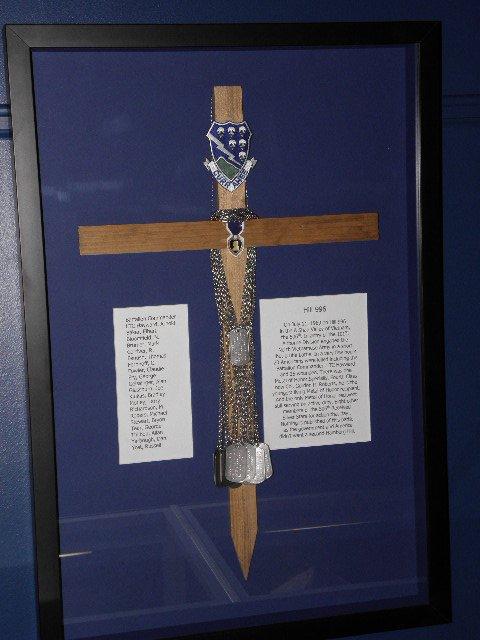 |
| Click Here |
|
|
|
Battle of Ong Thanh
October 17, 1967
During this little known battle of the Vietnam War, 155 soldiers of the 2nd Battalion, 28th Infantry Regiment of the 1st Infantry Division, were ambushed by 1200-1400 VC's hiding in tall trees and lodged inside well-fortified bunkers.
The overwhelming assault included rifle fire and RPGs from trees, machine-gun fire from the ground and explosions from claymore mines.
| |
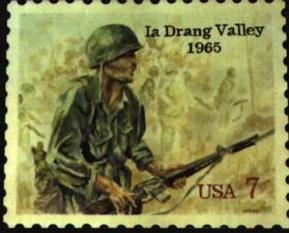 |
| In Memory of these brave soldiers of the First Cavalry Division(Airmobile) who gave their lives for their country and the men who fought beside them in the Ia Drang Valley during the Pleiku campaign in October and November 1965. |
|
|
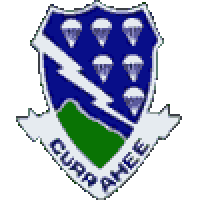 |
| Hill 996 A Shau Valley 11 July 1969 |
|
|
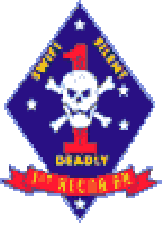 |
| 3 June, 1968. Known only to me as Hill 200, it was a desolate, indefensible place that somebody in the 1st Mardiv G3 shop picked off the map to insert my platoon on as an observation post & radio relay. |
|
|
This is a message from a few of the men from
Company D, 1st of the 506th Infantry
101st Airborne Division (Airmobile)
We would like to take a moment of peaceful reflection and recognize some of America's finest.
The following casualty list is a tribute in recognition of those killed and wounded in action on 11 July 1969 at Hill 996 in the A Shau Valley, Thua Thien Province, I Corps area, Republic of Vietnam.
These men were our brothers-in-arms in the 1st of the 506th.
This listing is in memory of
CPL Elbert J Baker, Jr., SGT Norman H Bloomfield, CPL Mark Bruner, CPL Richard Corriveau
CPL Thomas "Doc" Fenush, CPL Curtiss Fernhoff, PFC Claudie Fowler, SP4 George Fry
PFC Alan Geissinger, SP4 Joe Glassburn, LTC Arnold Hayward, PFC Bradley Klukas
PFC Larry "Doc" Motley, CPL Marvin Richardson, PFC Michael F. Rogers, SSGT Byron Stewart
PFC George Tear, PFC Allan Thibou, 2LT Dan Yarbrough & PFC Russell Yost
and the 26 men wounded in this action.
To my knowledge these men have never been recognized as a group, as having fought together in a single mission to take Hill 996 from the North Vietnamese Army, as having seized control of the surrounding area. To my understanding, this mission was mounted to thwart a summer offensive by the North Vietnamese Army.
Contrary to the stories circulating through America of United States soldiers in Vietnam being unwilling to fight, these men fought and did it against all odds. Nothing was ever mentioned about their sacrifice.
By all signs observed they knew that they could be outnumbered and in the NVA's back yard.
We were told, before assaulting the Hill, that there would be no artillery preparation or support, no gunship or Aerial Rocket Artillery support, and no tactical air support in the initial assault. To the US infantryman in Vietnam, artillery and air support were the only equalizers. The North Vietnamese Army had the manpower, the terrain, and the tactics. We had the fire power and the mobility ... but not on this day.
No-one liked the idea or the expected odds, but the men of the 101st Airborne Division went heads-up against the North Vietnamese Army anyway, in the worst possible terrain you could imagine, in the rain, into an NVA stronghold.
The NVA were tactical experts on their own ground. They were unparallelled at using fire and maneuver tactics in this mountain jungle region of the A Shau valley.
From hitting hot landing zones to being pinned under fire in the open, from blazing sunlight to nighttime cold to the wind and rain of a waning typhoon centered off Hue, these men continued. Following sporadic contact with the enemy, enough to ensure little or no sleep on the night of 10/11 July, on the morning of 11 July these men rucked up and moved out in a hard rain toward the objective. Tired, wet, knowing for some reason (perhaps the weather) there would be no support, they went into the face of a ready, waiting, and well-prepared enemy.
The early loss of our radio communications was unexpected and devastating. Communications are so vital that one radio-telephone operator from Delta 1/506 by himself literally gave up his life in order to restore both the Company and Battalion radio nets. There were many individual acts of heroism which blended into a total team effort to gain control over the situation. Confusion? Yes, but no-one gave up. We took Hill 996 on 11 July 1969.
This is a short, clean, summary, without distracting details, of a very long and complex ordeal. Details would be raw and ugly, and would not do justice to men who did what they had to do and did it with all the grace, style, and determination that comes to mind when America thinks of her heros.
One of my Hill 996 buddies, Gregory Denton, said, and correctly so,
" No one will ever know
what happened here."
He was killed in action 17 days later.
The units involved in the assault on Hill 996 were
- Delta Company, 1/506th Infantry
- Bravo Company, 1/506th Infantry
- Charlie Company, 2/506th Infantry
- 2/17 Cavalry's Aero-Rifle hunter-killer team
- Our Scout Dog team
Brave men all, and men to remember.
Richard "Doc" Daniels
|
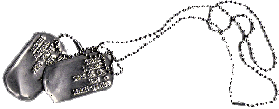 |
| Eric Craig Egge - Hopkins, Minnesota |
|
|
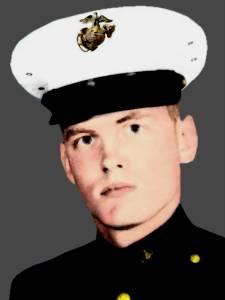 |
| Paul Hellstrom Foster |
|
|
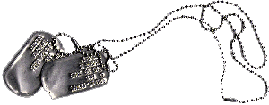 |
| Duane John Foss - Hastings, Minnesota |
|
|
|
October 14th, 1967
In the second week of October 1967 the 2nd Battalion, 4th Marines, relieved BLT 2/3 as the defense force for the recently built bridge north of Strongpoint C-2. The construction of the bridge had permitted the reopening of the vital road to Con Thien washed out by the heavy September rains. The battalion defended the bridge because the 3rd Marine Division was concerned that if the enemy destroyed the bridge they would cut the only supply line to Con Thien.
The defense of the bridge was no easy task for Lieutenant Colonel Hammond's battalion. Since its move north from Camp Evans on 11 September, constant combat around Con Thien had worn the battalion down from a "foxhole strength" of 952 to about 462. The 2nd Battalion, 4th Marines had great difficulty in manning all the defensive positions prepared by the departed full-strength BLT-2/3.
The defensive position around the bridge was divided into quadrants by virtue of the road, which ran roughly north and south, and the stream, which ran east and west. Golf Company had the northwest quadrant; Hotel Company was on the same side of the road but across the stream in the southwest quadrant. Fox Company was in the northeast; Echo Company in the southeast. The battalion command group set up beside the stream in Golf Company's area and near the center of the position.
At 0125 on 14 October, 25 artillery rounds, rockets, and 135-150 mortar rounds hit Hotel Company. An ambush squad posted in front of the company reported an enemy force moving toward it, and immediately took the advancing enemy under fire. The Marine squad leader notified his company that he had three casualties and that the enemy seriously outnumbered his squad. The company commander, Captain Arthur P. Brill, Jr., ordered the squad to pull back and, at the same time, called for night defensive fires to block the avenues of approach to his position. The battalion requested flare ships to illuminate the area. Using starlight scopes, sniper teams watched the enemy as they massed only 50 meters in front of the company. The snipers and two tanks attached to the company opened fire, forcing the North Vietnamese to start their assault prematurely. The rest of the Hotel Company held fire until the NVA troops reached a clearing 20 meters from the wire. Of the entire attacking unit, only two NVA soldiers reached the wire and Marines killed both as they tried to breach that obstacle.
The enemy withdrew, leaving bodies behind, but they were far from finished. At 0230, enemy mortars shelled Golf Company. Direct hits by RPGs destroyed a machine gun emplacement and several backup positions on the primary avenue of approach into the company position. The NVA force attacked through this break, overran the company command post, and killed the company commander, Captain Jack W. Phillips, and his forward observer. Three platoon leaders, two of whom had just arrived in Vietnam that morning, also died. The battalion sent its S-3A, Captain James W. McCarter, Jr., to replace Phillips, but enemy fire killed him before he reached Golf Company. During the confused, hand-to-hand combat some of the North Vietnamese fought their way within grenade range of the battalion command post in the center of the position.
In the command post, although wounded by a grenade, Sergeant Paul H. Foster, a member of the fire support coordination center, continued to direct mortar and artillery fire upon the enemy. Another grenade landed among a group of six Marines. Sergeant Foster threw his flak jacket over the grenade and jumped on top of the jacket. The grenade blast mortally wounded him, but this action saved his fellow Marines. Before the melee ended, the North Vietnamese killed or wounded the entire forward air control team. The enemy also killed the battalion medical chief, and wounded the fire support coordinator, headquarters commandant, and battalion sergeant major.
Lieutenant Colonel Hammond moved what was left of his command group to a better location within Hotel Company's position. He ordered Fox Company to move to Golf Company's right flank and counterattack to push the NVA forces out of the perimeter. Illumination and automatic weapons fire from "Puff," the AC-47 requested at the beginning of the fight and which arrived about 0330, aided the counterattack. By 0430, the enemy began retreating out of the position, pursued by Echo Company.
The next morning the 2nd Battalion reconsolidated and evacuated casualties. There were twenty-one dead (18 from 2/4 Marines) and two dozen or more wounded. The NVA lost at least 24 killed. That afternoon, Lieutenant General Cushman and Major General Hochmuth visited the bridge site. They granted a request from Lieutenant Colonel Hammond that the new bridge be named "Bastard's Bridge" to honor the 18 Marines of the 2nd Battalion who gave their lives in its defense. At 1400, Hammond's battalion turned over the bridge to Lieutenant Colonel Needham's 3rd Battalion, 3rd Marines and then moved to Dong Ha where it assumed the mission of regimental reserve after 42 days of close combat.
The men killed in action at Bastard's Bridge were
- H Btry, 3rd Bn, 12th Marines
- G Co, 2nd Bn, 4th Marines
- Capt Jack W. Phillips, Mission, KS (Silver Star)
- 1stLt Charles Yaghoobian, Pawtucket, RI
- 2ndLt Eric C. Egge, Hopkins, MN
- LCpl John P. Avery, Elizabethton, TN
- LCpl Duane J. Foss, Hastings, MN
- LCpl Frank Foster, Meridian, MS
- LCpl Phillip S. France, Baltimore, MD (Silver Star)
- LCpl Donald A. Gehling, Grand Meadow, MN
- LCpl Morris J. Sensat, Egan, LA
- Pfc Robert D. Buchanan, Bristol, VA
- Pfc Gary C. Griswold, Bethel, CT
- Pfc David A. Hamilton, Springfield, OH (Silver Star)
- Pfc William I. White, North Vandergrift, PA
- Pfc Stephen R. Worley, West Monroe, LA
- H&S Co, 2nd Bn, 4th Marines
|
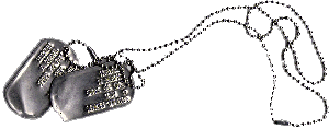 |
| Donald Anton Gehling - Grand Meadow, Minnesota |
|
|
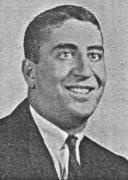 |
| Charles Yaghoobian, Jr |
|
| |
|
Cam Lo and Con Thien, just below the Demilitarized Zone
September 07 & 10, 1967
|
|
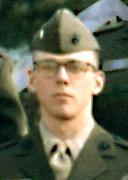 |
| Charles Edward Ryberg Jackson, Minnesota |
|
| |
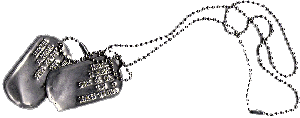 |
| Bruce Herbert Krage - Minnesota City, Minnesota. |
|
| |
 |
| Stephan Joseph Nelson - Princeton, Minnesota. |
|
|
| On 07 and 10 Sep 1967 the men of the 3rd Battalion, 26th Marines, fought two bitter battles along the main supply route between Cam Lo and Con Thien, just below the Demilitarized Zone. At least 56 Marines and sailors died in the fighting.
The fight on 07 Sep 1967 took place in and around a churchyard and cost the lives of no less than 20 Americans:
- C Btry, 1st Bn, 13th Marines
- H&S Co, 3rd Bn, 26th Marines
- I Co, 3rd Bn, 26th Marines
- LCpl James M. Daniels, Wichita, KS
- LCpl Eddie D. Hamm, Nashville, TN
- Sgt Bruce H. Krage, Minnesota City, MN
- LCpl Gary W. Lindsay, Grand Forks, ND
- LCpl Stephan J. Nelson, Princeton, MN
- LCpl Robert R. Rogers, Gillette, WY
- K Co, 3rd Bn, 26th Marines
- Sgt Larry V. Flora, Hilliard, OH
- LCpl Donald L. Graves, Rochester, NY
- Cpl James E. Lewis, Tiverton, RI
- Pfc Benito Morales, New Braunfels, TX
- LCpl Samuel L. Parker, Columbus, OH
- Pfc James H. Stuart, Turner, OR
- Cpl Robert M. Warren, Pen Argyl, PA
- M Co, 3rd Bn, 26th Marines
|
Categories within this 1st Reconnaissance Battalion website.
1st Recon Bn.com Home page, My Missions in Nam (Coming soon), Photos of 1st Recon Battalion in Nam, Recon Missions the units Patrol Reports 1968-1969 (coming soon), A Summer Day in Nam - My Story (Coming soon), Recon 1 The War, Recon 2 Tet Offensive in Nam 1968, Tet Offensive in Nam 1969 (Coming soon), Recon 3 Vietnam War Timeline, Recon 4 President Richard M. Nixon's Report on Vietnam, Recon 5 1950's US send troops to Vietnam, Recon 6 The French Foreign Legion in Vietnam, Recon 7 Hill 200 my story with photos (Coming soon), Recon 8 - Maps & Artifacts - The Time Capsule (Coming soon), Recon 9 1st Recon Battalion Units photos, Recon 10 Sounds from Nam (Coming soon), Recon 11 Reunion Photos, Recon 12 Helicopters in Nam, Recon 13 1st Recon Bn. Awards & Decorations, Recon 14 Navy & Marine Corps Awards and Decorations, Recon 15 Marine Corps Awards & Decorations, Recon 16 Personal Awards & Decorations, Recon 17 Information on Unit Awards, Recon 18 The Memory Remains Not All Wounds Are Visible, Recon 19 Purple Heart (Coming soon) & Recon 20 Vietnam Footage & Memorials, Vietnam Memorials & Monuments part 2 No Man Left Behind part 1, No Man Left Behind part 2, No Man Left Behind part 3 (Coming soon) ,1st Recon Bn.com Photo Gallery , 1st Recon Bn. Association Messages, 1st Marine Division Association Messages, Battles of the Vietnam War, Hamburger Hill, Vietnam 1968, Vietnam 1969, Vietnam Today, The Day The Eagle Cried, My Message Board.
|
|
|
Index
Categories within 1st Recon Bn
Click the index for the Index page. |
| |
This website contains, in various sections, portions of copyrighted material not specifically authorized by the copyright owner. This material is used for educational purposes only and presented to provide understanding or give information for issues concerning the public as a whole. In accordance with U.S. Copyright Law Title 17 U.S.C. Section 107, the material on this site is distributed without profit. More Information
Information presented based on medical, news, government, and/or other web based articles or documents does not represent any medical recommendation or legal advice from myself or West Saint Paul Antiques. For specific information and advice on any condition or issue, you must consult a professional health care provider or legal advisor for direction.
I and West Saint Paul Antiques can not be responsible for information others may post on an external website linked here ~ or for websites which link to West Saint Paul Antiques. I would ask, however, that should you see something which you question or which seems incorrect or inappropriate, that you notify me immediately at floyd@weststpaulantiques.com Also, I would very much appreciate being notified if you find links which do not work or other problems with the website itself. Thank You!
Please know that there is no copyright infringement intended with any part of this website ~ should you find something that belongs to you and proper credit has not been given (or if you simply wish for me to remove it),
just let me know and I will do so right away.
|
Website Terms and Condition of Use Agreement
also known as a 'terms of service agreement'
By using this website, West Saint Paul Antiques . Com, you are agreeing to use the site according to and in agreement with the above and following terms of use without limitation or qualification. If you do not agree, then you must refain from using the site.
The 'Terms of Use' govern your access to and use of this website and facebook pages associated with it. If you do not agree to all of the Terms of Use, do not access or use the website, or the facebook sites. By accessing or using any of them, you and any entity you are authorized to represent signify your agreement to be bound by the Terms of Use.
Said Terms of Use may be revised and/or updated at any time by posting of the changes on this page of the website. Your continued usage of the website, or the facebook site(s) after any changes to the Terms of Use will mean that you have accepted the changes. Also, any these sites themselves may be changed, supplemented, deleted, and/or updated at my sole discretion without notice; this establishes intellectual property rights by owner (myself).
It saddens me to include a Terms of Use for West Saint Paul Antiques . Com, but we all realize it is something that is necessary and must be done these days. By using the website, or facebook for West Saint Paul Antiques, you represent that you are of legal age and that you agree to be bound by the Terms of Use and any subsequent modifications. Your use of the West Saint Paul Antiques sites signify your electronic acceptance of the Terms of Use and constitute your signature to same as if you had actually signed an agreement embodying the terms.
|
 |
| Email me with your feedback on how I can Improve this website. |
|
|
By Kimberly Anne Davis, Age 13
|
|
never live somewhere too long.
I never planted a tree and watched it grow.
I never know where I will be next week.
I never wore hi-fashion clothes.
I never became "part of the crowd."
There are other things I've never done.
I never was afraid to speak freely.
I never was scared to show my religion.
I never worried about unjust laws being made.
I never left flowers at a loved one's grave,
who died so I might be free.
I never forget how lucky I am.
|
 |
| No Man Left Behind |
|
|
|